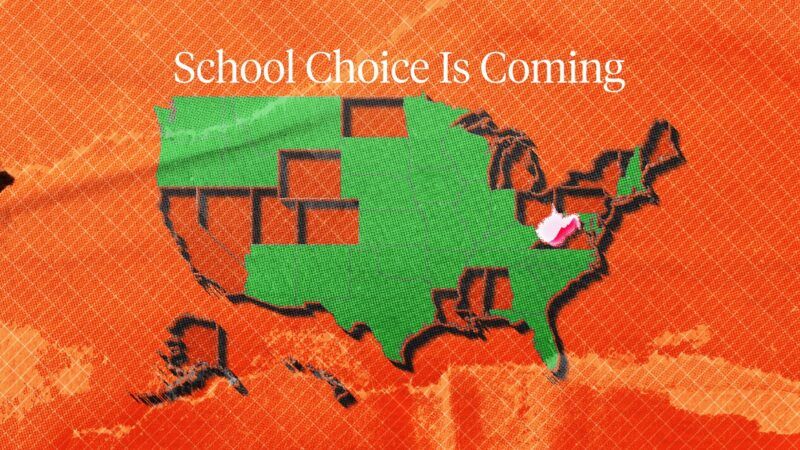School Choice Is Coming to Union Stronghold West Virginia
School closures are the best thing to happen to educational choice.

On March 18, the West Virginia Senate passed a landmark education bill to create the nation's largest education savings account (ESA) program, which would let parents withdraw their children from public schools and allow them to take the funds that would have been spent by the state and spend them on private school tuition, tutoring, or homeschooling expenses. The bill, which will most likely be signed by Gov. Jim Justice (R) later this week, would be a huge victory for school choice proponents and families who have become disillusioned with their residentially assigned public schools during the COVID-19 pandemic.
The program is required to be operational by no later than July 1, 2022 and is estimated to have an initial enrollment of 5,118 students receiving $4,600 each. For the first few years the program will only be available to students currently in public schools, but the bill will expand eligibility to current homeschool and private school students in 2026 if the cap on 5 percent of statewide public-school enrollment is not met.
"Simply put, today is a proud day for West Virginia and will provide hope for generations of children in our state," said Garrett Ballengee, executive director of the state's libertarian-leaning Cardinal Institute, to the radio station WV MetroNews.
Just a few years ago, the idea that a state like West Virginia could adopt such bold school choice reform would have sounded like a pipe dream. The state has a long political history of strong labor unions and, before 2019, was one of a small handful of states that still didn't allow for public charter schools. But the pandemic has changed everything: Widespread frustration with virtual learning and slow school reopenings has prompted lawmakers across the nation to introduce bills to fund students instead of institutions.
According to tracking from the Education Freedom Institute, a think tank that promotes school choice, legislators in 28 other states have introduced laws to create or expand programs like ESAs, tax credit scholarships, or school vouchers this year. This includes some states which already have robust school choice landscapes like Arizona and Indiana, but also newly interested ones like Washington and Idaho.
Not all these bills will become law, of course. But some states have already passed significant reforms: South Dakota's Republican governor, Kristi Noem, signed a bill expanding eligibility for the state's tax-credit scholarship program on March 18 and about a dozen other states—including New Hampshire, Georgia, and Missouri—have successfully moved school choice bills through committees and state legislative chambers over the past month.

To better understand why demand for school choice is surging, take a look at February public opinion poll results gathered by EdChoice and Morning Consult. Of all American adults, only 48 percent approve or somewhat approve of how their state governors have influenced school reopening decisions and only 44 percent approve or somewhat approve of how local teachers unions have influenced reopening decisions. Also, parents with kids who are in private school or homeschooled feel more positively about their children's social and academic progress than public school parents do.
These sentiments are further confirmed by the decisions families have made during the pandemic. Public school enrollment dropped in at least 33 states over the last year as families switched to private schools since all but 5 percent of them were open for in-person learning last fall. Meanwhile, 62 percent of public school students began the school year with only virtual instruction. Additionally, homeschooling rates doubled from 5.4 percent to 11.1 percent nationwide during the pandemic, according to recent U.S. Census Bureau data. Unsurprisingly, this substantial shift between schooling sectors has led more parents to demand power over the education dollars traditionally controlled by districts.
Beyond the sheer volume of legislation, what's unique about this moment for education reform is how policymakers are advancing programs that give families more flexibility over funds. Of the 29 states introducing at least one choice bill, 23 sponsored an ESA bill—a more flexible option compared to a tax-credit scholarship or voucher. In the past, school choice initiatives were largely focused on helping more students afford private schooling. But now because of the organic growth of learning pods, micro-schools, and hybrid schooling models during the pandemic, legislators recognize that there's more to school choice than just helping kids go from public school to private; families also want the freedom to customize their child's learning and depart from traditional classrooms altogether.


Show Comments (15)